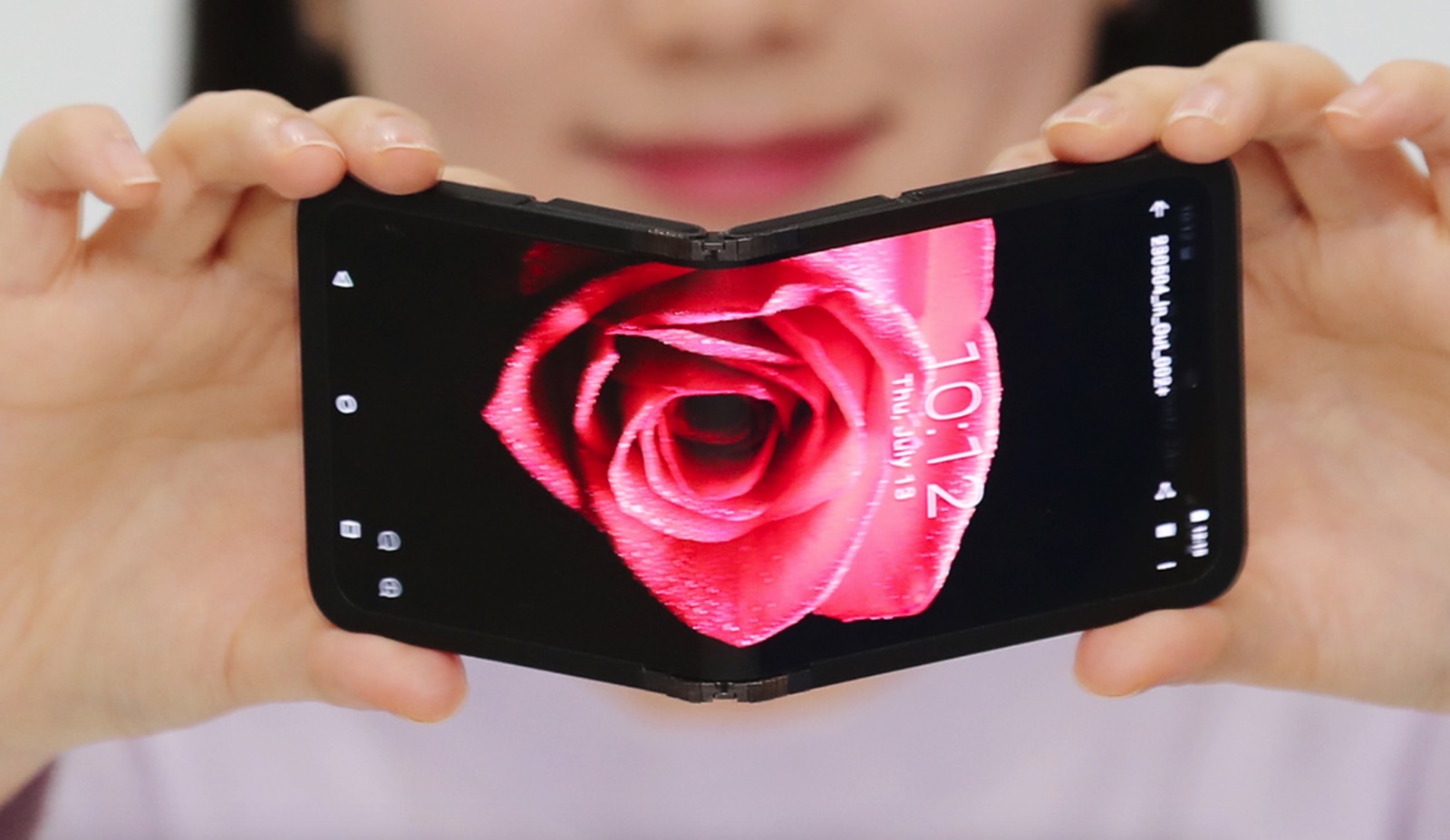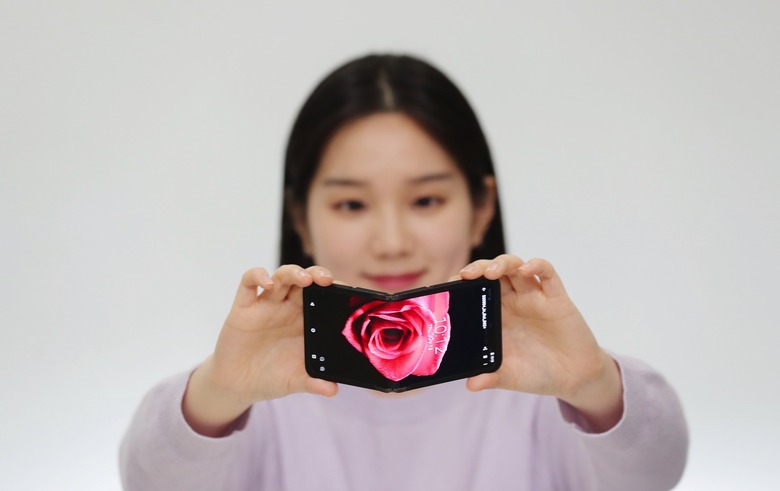Samsung's New Foldable Phone Screen From CES 2024 Sounds Too Good To Be True
I'm still a big fan of foldable phones despite the obvious worries. They're fragile and significantly more expensive than premium candybar smartphones. And foldables might not always get you the best hardware and software experience. Also, we only have Android foldables, as Apple is yet to make a foldable iPhone. Though rumors say Apple is exploring larger foldable devices, like some sort of foldable iPad contraption.
Samsung is at the forefront of the foldable business because it was one of the first vendors to invest in foldable display technology. However, the Korean giant has been rather slow at delivering more impactful innovations because it lacked proper competition in the space until last year. That might explain why Samsung was eager to show off its In&Out Flip foldable screen tech at CES 2024.
As the marketing name implies, In&Out Flip phones will be able to fold in both directions. As a result, the need for a separate external display would be eliminated. However, the tech sounds too good to be true. I already worry about a foldable display's durability when it only has to fold in a single direction. Having it fold in and out sounds like a recipe for disaster.
All foldable phones available on the market fold inwards. But all of them feature external displays too, so you can still use them while they're folded. That goes for Flip-style and Fold-type devices.
Samsung appeared to be caught off guard last year when some of its rivals came up with Galaxy Z Flip alternatives that featured much larger external displays than what Samsung had to offer. Samsung corrected that with the Flip 5. But it seemed like the Korean giant was following the market rather than leading it.
That's where the new In&Out Flip foldable display comes in. The new screen would let you fold the display both inwards and outwards.
"In&Out Flip is a technology that can provide a new alternative for consumers who prefer bar-shaped smartphones due to the thickness of foldable products," Samsung said in a press release. "When folded outwards, both the front and back of the product can be used as a screen, creating a new user experience."

How strong is it?
Samsung says the In&Out Flip "achieves a sleeker and thinner design with a single display." I speculate that a single display could also help Samsung maximize the internal space and increase the battery size, even if only a small amount.
As for the durability of Samsung's foldable displays, the press release indicates that Samsung is putting its foldable screens through gruesome tests. However, the quote below doesn't seem to be specific to the In&Out Flip screens.
Samsung Display's durability tests showcase its expertise in foldable technology. The panels underwent folding in extreme temperatures ranging from -20 degrees Celsius to 60 degrees Celsius. Additionally, basketballs are bounced on the foldable panels, and the smartphones are subjected to rubbing with sand and immersion in water. These rigorous tests should provide customers with a clear understanding of the durability of Samsung's foldable products, even in challenging environments.
Samsung will unveil other foldable panels at CES, including a Rollable Flex panel, a rollable display that expands the screen size by five times. Also, Samsung has a Flex Hybrid panel in the works, which combines foldable and slidable displays.
As for the In&Out Flip screen, it's unclear which smartphone vendors will make use of it. The Galaxy Z Flip 6 coming this summer could always be a candidate. But there's no telling if Samsung will use its In&Out Flip foldable screen tech on its own phones.
I'll also point out that a foldable flip phone design like this would involve a brand-new hinge, which would allow that 360-degree movement. Samsung doesn't describe that key component, however.
